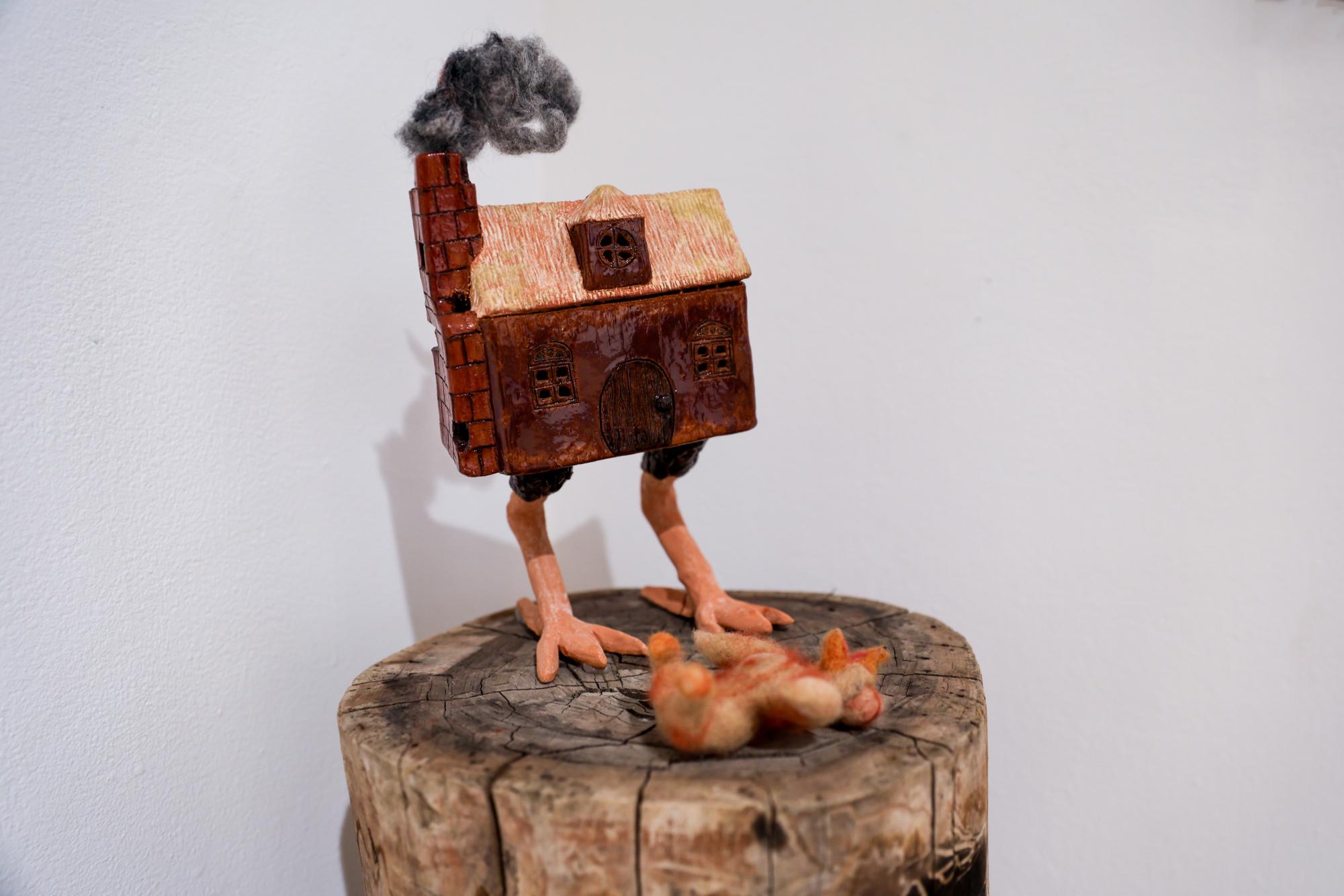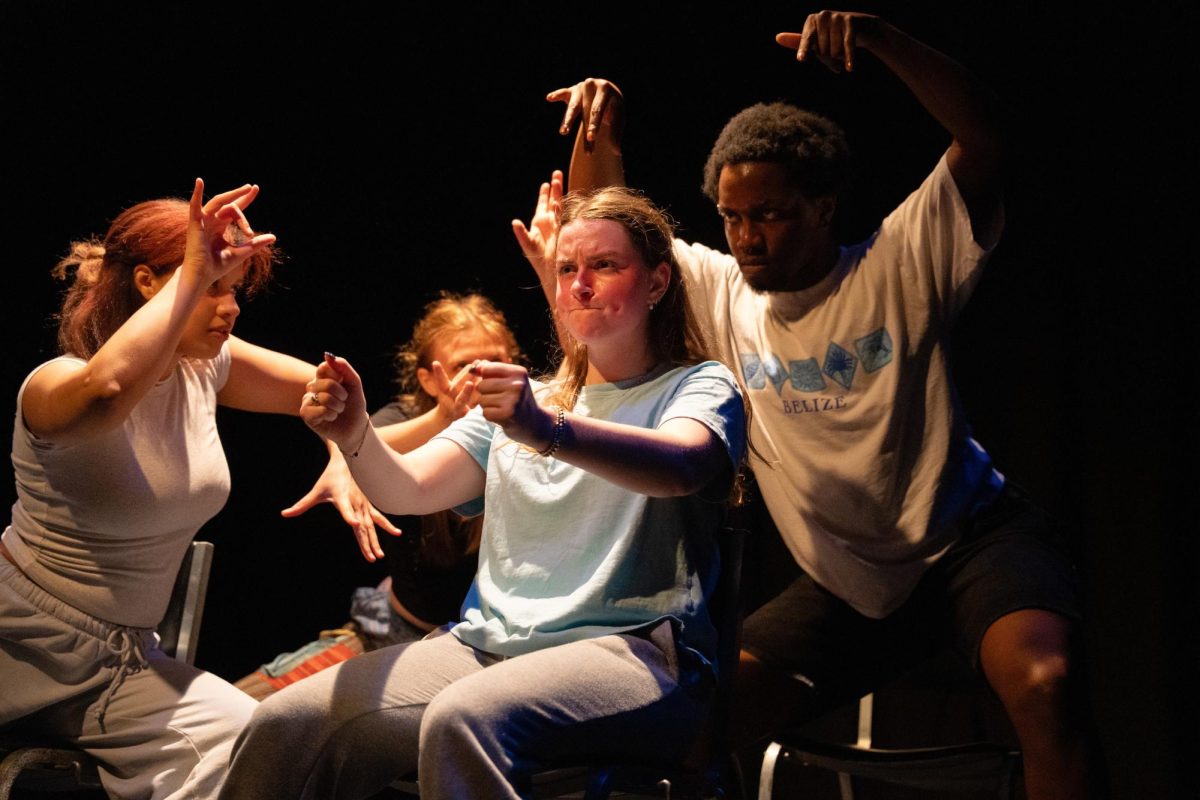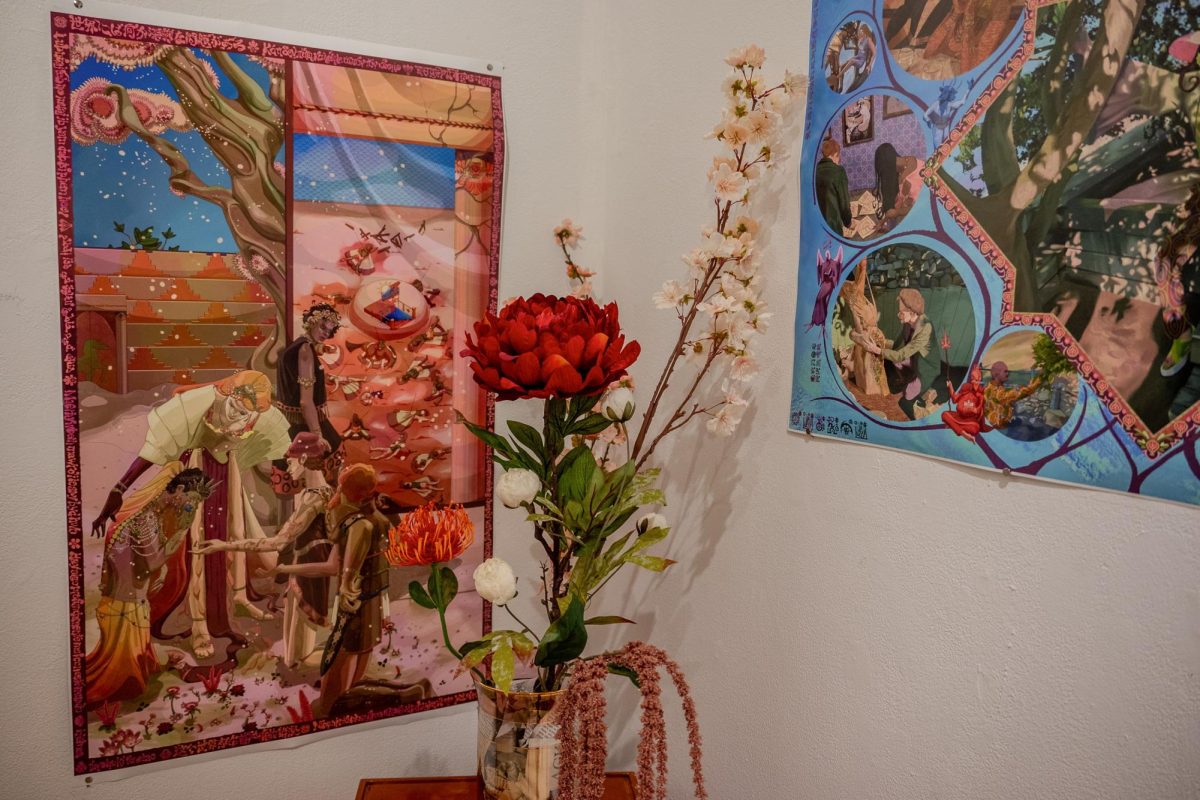From Feb. 24 through March 8, a dark fairytale world of nature, femininity and decay transformed the Edith Renfrow Smith `37 gallery. The show, “Exquisite Decay,” was created by Evie Redding `25 and displayed their wide-ranging exploration of mediums and interdisciplinary interests.
On the left-hand wall, a series of seven print monotypes of black birds with red berries hung unframed. Redding explained that each bird was a different Midwestern species. The facing wall supported three sculptural felt and porcelain black birds in progressive stages of decay. In the back were two gouache paintings of women in woodsy settings, one stooping to collect flowers and one to collect bones. The right-hand wall was peppered with a multitude of small prints, both abstract pieces and inky depictions of insects and birds. In opposite corners of the gallery, two pedestals draped with scraps of cloth and adorned with the bones of a possum skeleton supported large, wooden logs. On top of each log was a ceramic depiction of a house with legs and a woman’s body with a house as the head.
A studio art and anthropology double major, Redding specializes in ceramics and textiles in their first degree and biological anthropology in their second. These diverse interests unite in Redding’s artistic work.
The piece that started this body of work — the ceramic woman with a house head — came from Redding’s first semester at Grinnell, while the gouache paintings, the latest pieces included in the exhibit, were finished just a few weeks before the show opened.
“It’s actually something I’m struggling with now. Because I’ve been building up, building up, building up to this, and now I’ve got time, and I don’t really know what to work on,” Redding said.
Redding sourced the installation elements for their exhibit from a wide array of sources — the logs were found unused in Bucksbaum Arts Center, the scraps of fabric were gifted by a Grinnell staff member, and the bones discovered outside various campus buildings. Additionally, the black vinyl decals that lined the bottom of the walls and converged into the ceiling-high tree in the back corner were all Redding’s own creation.
“I hand-lettered my title and vectorized that and cut it so there’s a lot of vinyl. The first day of installation I did was literally just putting up all the vinyl,” said Redding.
At the entrance to the gallery, Redding left a small notebook with a message encouraging viewers to leave thoughts based on the artwork. The pages were filled with impressions including doodles of birds, messages of appreciation, favorite pieces and more abstract reactions as well. One gallery attendee wrote simply “squawk!”
Redding said that they like the term “dark whimsy” to describe their work and interest in fairytales as a source of artistic inspiration. Redding said they drew on the Slavic folklore of Baba Yaga and that they create narratives connecting their artwork. “I imagine her to be the same woman as is in these paintings, and I imagine her to be that house, and I imagine her to be all these different things,” Redding said, gesturing around the gallery.
Redding once again connected their interests in biology, anthropology, storytelling and art as they explained the central ideas uniting this body of work and the inspiration behind the title of the exhibit.
“Things decaying is not ugly — it happens to everything,” said Redding. “In fact, we are at a very rare point in the history of life that things don’t decay. That we have so many things that will last hundreds of generations from now. I think it’s really beautiful that things … kind of have this life after death. In a lot of ways, that’s what I’ve done with the skeleton—give it a new life.”







